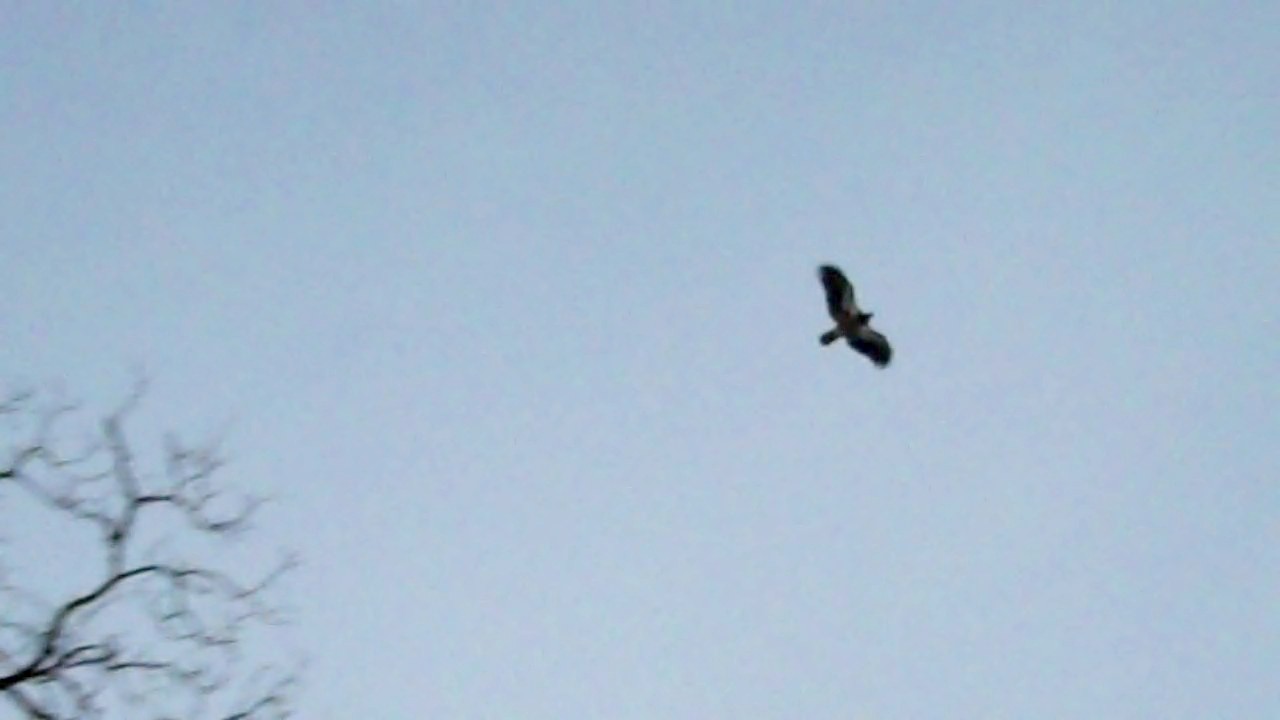Thanks to the efforts of many individuals and organizations, the Bald Eagle population has significantly rebounded over the last few decades. Before recent efforts began, the last eagle nest record for Indiana was in 1897. In 2010, more than 100 pairs of Bald Eagles nested in Indiana. Even Marion County (Indianapolis) has at least three Bald Eagle nests. The increase in the Bald Eagle population also provides for a terrific opportunity to see a lot of them in Indiana during the winter.
A traditional viewing location for eagles is the West Union Bridge in Parke County. The eagles roost on private property along Sugar Creek. In the morning, around dawn, the birds fly from the roost, with most heading to the open water of the Wabash River and a power plant in Cayuga. If you are in position near the bridge, you can watch the eagles flying as they leave the roost. Numbers of individuals can change significantly from week to week depending primarily on weather conditions, both here in Indiana and further north. Depending on when you visit, the number of individuals could be in the single digits or as high as 70 birds.
The usual peak concentration of eagles is towards the end of January. In 2010, the Amos Butler Audubon Society field trip to this area produced a low 25 birds. Yes, I realize 25 eagles is amazing and we should appreciate seeing so many. But, compared to other years, 25 eagles is a low number. Our 2011 field trip was likely to see many more eagles based on recent reports from others. The goal was to see 70 Bald Eagles in a morning of birding Parke and Vermillion counties.
We left Avon, Indiana at 6:10am on January 23, 2011, and arrived at West Union Bridge at 7:30 am. Others were already at the location and let us know that we missed two birds that had already flown over. We watched over the next 50 minutes and did our best to see every eagle that was making its way from the roost. At 8:20 am, after 10 minutes of no eagle activity, we decided to move to our next destination. Fifty-two Bald Eagles had been spotted leaving the roost. An excellent number to start the day.
At our next location we tried for Golden Eagle, but struck out and had to settle for an additional eight Bald Eagles and viewing a eagle nest in the distance. The next two stops in Vermilion County produced more than a dozen Bald Eagles. Since some of these birds could have been birds that were seen leaving the nest, they were not counted for the day. The only two eagles in Vermilion County that were added to our morning’s total were single birds at each of two nests. Trip participants were able to see one nest up close and even veteran eagle-watchers are awed by such an experience.
We plan on going back in January 2012. No matter how many eagles we see, it will be an amazing experience. Hope you might join us.
Photo is of a first-year Bald Eagle leaving the Parke County roost on January 23, 2011.
Don Gorney

